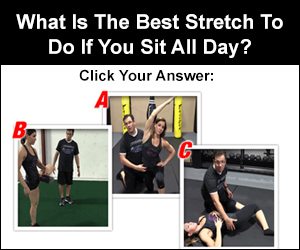Jump rope is a versatile and effective cardio workout that can be done almost anywhere. This simple exercise tool offers a high-intensity workout that burns calories and improves cardiovascular health. Jump rope cardio can burn up to 10-16 calories per minute, making it one of the most efficient forms of exercise for weight loss and fitness.

Incorporating jump rope into your fitness routine provides numerous benefits beyond calorie burning. It enhances coordination, agility, and balance while strengthening the legs, core, and upper body. Jump rope workouts can be tailored to suit various fitness levels, from beginners to advanced athletes.
Getting started with jump rope cardio is easy and requires minimal equipment. A properly sized rope and a flat surface are all you need to begin reaping the rewards of this dynamic exercise. As you progress, you can explore different jumping techniques and interval training to keep your workouts challenging and engaging.
Key Takeaways
- Jump rope is a high-intensity cardio workout that burns calories efficiently
- Regular jump rope sessions improve cardiovascular health and overall fitness
- Proper technique and gradual progression are key to maximizing benefits and avoiding injury
Choosing the Right Rope
Selecting an appropriate jump rope is crucial for an effective cardio workout. The right rope ensures comfort, safety, and optimal performance.
Determining the Correct Length
Jump rope length is essential for proper form and technique. To find the right size, stand on the middle of the rope with feet together. The handles should reach your armpits.
Most ropes are adjustable. If yours isn’t, consult a size chart based on your height. A rope that’s too long can trip you, while one that’s too short may hit your feet.
For beginners, a slightly longer rope is forgiving. As skills improve, a shorter rope allows for faster jumps.
Weighted Rope Vs. Speed Rope
Weighted ropes provide a more intense workout. They engage more muscle groups and burn more calories. The added resistance improves strength and endurance.
Speed ropes are lighter and ideal for quick footwork. They’re perfect for double unders and high-intensity interval training. These ropes spin faster, allowing for more jumps per minute.
Beginners often start with a standard rope before progressing to weighted or speed ropes. The choice depends on fitness goals and experience level.
Handle Types and Comfort
Handle comfort is key for extended jumping sessions. Foam handles offer a soft grip but may wear down quickly. Plastic handles are durable and lightweight.
Ergonomic handles reduce wrist strain. Some feature ball bearings for smooth rotation. This is especially useful for speed work.
The handle’s weight affects the rope’s balance. Heavier handles provide more control but can tire arms faster. Lighter handles allow for quicker movements.
Consider grip size. Handles that are too thick or thin can cause discomfort. Many ropes offer interchangeable handles to find the perfect fit.
Jump Rope Technique and Form
Proper technique is crucial for an effective and safe jump rope workout. Mastering the basic form allows for a smooth, efficient cardio session while minimizing the risk of injury.
Hand Position and Arm Movement
Hold the jump rope handles with a relaxed grip. Keep your hands at waist level, slightly wider than your hips. Elbows should be close to your body, bent at about 90 degrees.
Turn the rope using primarily your wrists and forearms. Avoid excessive shoulder movement. This conserves energy and allows for faster rotations.
For optimal control, position your hands slightly in front of your hips. This placement helps maintain a consistent arc as the rope swings overhead.
Footwork and Coordination
Start with feet together, knees slightly bent. Jump just high enough for the rope to pass under your feet – about 1-2 inches off the ground.
Land softly on the balls of your feet. This reduces impact and allows for quicker subsequent jumps. Keep your core engaged for stability.
Maintain a steady rhythm. As you improve, aim for a consistent tempo to enhance endurance and efficiency. Practice variations like alternating feet or high knees to challenge your coordination.
Avoiding Common Mistakes
Watch your rope length. If it’s too long, you’ll struggle to maintain speed. Too short, and you risk tripping. Adjust so the handles reach your armpits when standing on the middle of the rope.
Don’t jump too high. It wastes energy and increases impact on your joints. Focus on timing rather than height.
Keep your upper body relaxed. Tension in the shoulders or arms leads to fatigue. Breathe steadily and maintain good posture throughout your session.
Avoid looking down at your feet. This can throw off your balance and timing. Instead, focus your gaze straight ahead or slightly downward.
Building a Cardio Workout
Jump rope cardio workouts can be tailored to different fitness levels and goals. The key components include proper warm-up and cool-down routines, interval training for intensity, and beginner-friendly routines to build endurance.
Warm-Up and Cool Down Routines
A proper warm-up prepares the body for exercise and reduces injury risk. Start with 5-10 minutes of light jumping or marching in place. Follow this with dynamic stretches like arm circles, leg swings, and torso twists.
For the cool-down, gradually reduce jumping intensity over 3-5 minutes. Finish with static stretches, holding each for 15-30 seconds. Focus on major muscle groups used during jumping:
- Calves
- Quadriceps
- Hamstrings
- Shoulders
These routines improve flexibility and circulation, promoting better performance and recovery.
Incorporating Interval Training
Interval training alternates high-intensity bursts with recovery periods. This method boosts calorie burn and improves cardiovascular fitness. A basic interval structure:
- Jump rope at a moderate pace for 1 minute
- Increase speed for 30 seconds
- Return to moderate pace for 1 minute
- Repeat 5-8 times
Advanced jumpers can try:
- Alternating foot jumps
- High knees
- Double unders
Adjust intervals based on fitness level. Beginners might start with 15-second high-intensity bursts, while advanced jumpers can extend to 60 seconds or more.
Designing a Beginner Workout
New jumpers should focus on technique and gradually build endurance. Start with short sessions and increase duration over time.
Week 1-2:
- 3 sets of 1-minute jumping, 1-minute rest
- Perform 3 times per week
Week 3-4:
- 4 sets of 90-second jumping, 1-minute rest
- Perform 3-4 times per week
Week 5-6:
- 5 sets of 2-minute jumping, 1-minute rest
- Perform 4-5 times per week
Beginners should prioritize proper form over speed. Keep jumps low and controlled. Use a mirror to check posture and technique. As endurance improves, introduce basic variations like alternate foot jumps or side-to-side movements.
Health Benefits and Safety
Jump rope offers significant cardiovascular benefits and provides a full-body workout. It also carries some considerations for joint health and injury prevention.
Cardiovascular and Full-Body Workout Advantages
Jump rope is an excellent cardiovascular exercise that can improve heart health and lung capacity. It engages multiple muscle groups simultaneously, providing a comprehensive full-body workout.
Regular jump rope sessions can strengthen the heart, potentially reducing the risk of heart disease. The aerobic nature of this exercise helps increase endurance and stamina.
Jump rope also burns calories efficiently, making it an effective tool for weight management. It can improve coordination, balance, and agility.
Considerations for Joints and Injury Prevention
While jump rope is a high-impact activity, proper technique can minimize stress on joints. Using a shock-absorbing surface like a rubber mat can help reduce impact.
Wearing supportive shoes is crucial to protect feet and ankles. Starting with short sessions and gradually increasing duration helps prevent overuse injuries.
Proper form is essential. Landing softly on the balls of the feet reduces joint stress. Maintaining good posture and keeping jumps low can further protect joints.
Regular jump rope exercise may help increase bone density, but those with existing joint issues should consult a doctor before starting.
Advanced Techniques and Progress Tracking
Jump rope workouts can be elevated with advanced moves and strategic goal-setting. These elements enhance cardiovascular fitness and overall athletic performance.
Mastering Double-Unders and Complex Moves
Double-unders are a cornerstone of advanced jump rope techniques. This move requires the rope to pass under the feet twice in one jump. Proper form is crucial for success.
To perform double-unders:
- Keep wrists close to hips
- Use small, quick wrist rotations
- Jump slightly higher than normal
Practice single-double alternations to build rhythm. Gradually increase consecutive double-unders as skill improves.
Complex moves like crossovers and side swings add variety. These exercises boost coordination and engage different muscle groups. Start with short intervals and increase duration as proficiency grows.
Setting and Achieving Fitness Goals
Effective goal-setting drives progress in jump rope workouts. Begin by establishing baseline metrics for endurance and skill level.
Track progress with:
- Number of jumps per minute
- Duration of continuous jumping
- Mastery of specific techniques
Set SMART goals: Specific, Measurable, Achievable, Relevant, and Time-bound. For example, aim to perform 50 consecutive double-unders within 8 weeks.
Regularly assess performance and adjust goals as needed. Incorporate jump rope into broader fitness routines to build strength and power. Gradually increase workout intensity to continually challenge cardiovascular capacity.

